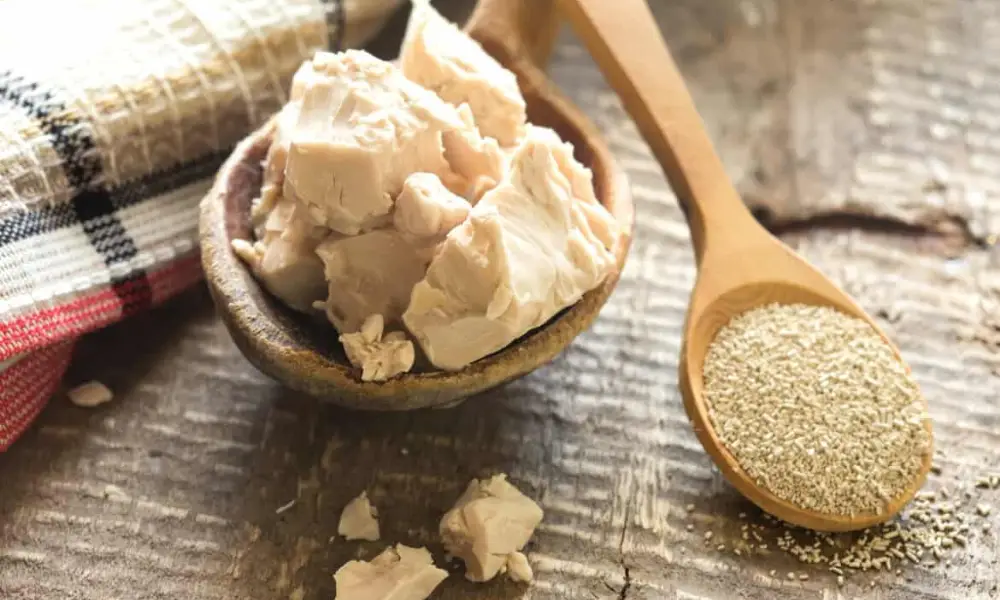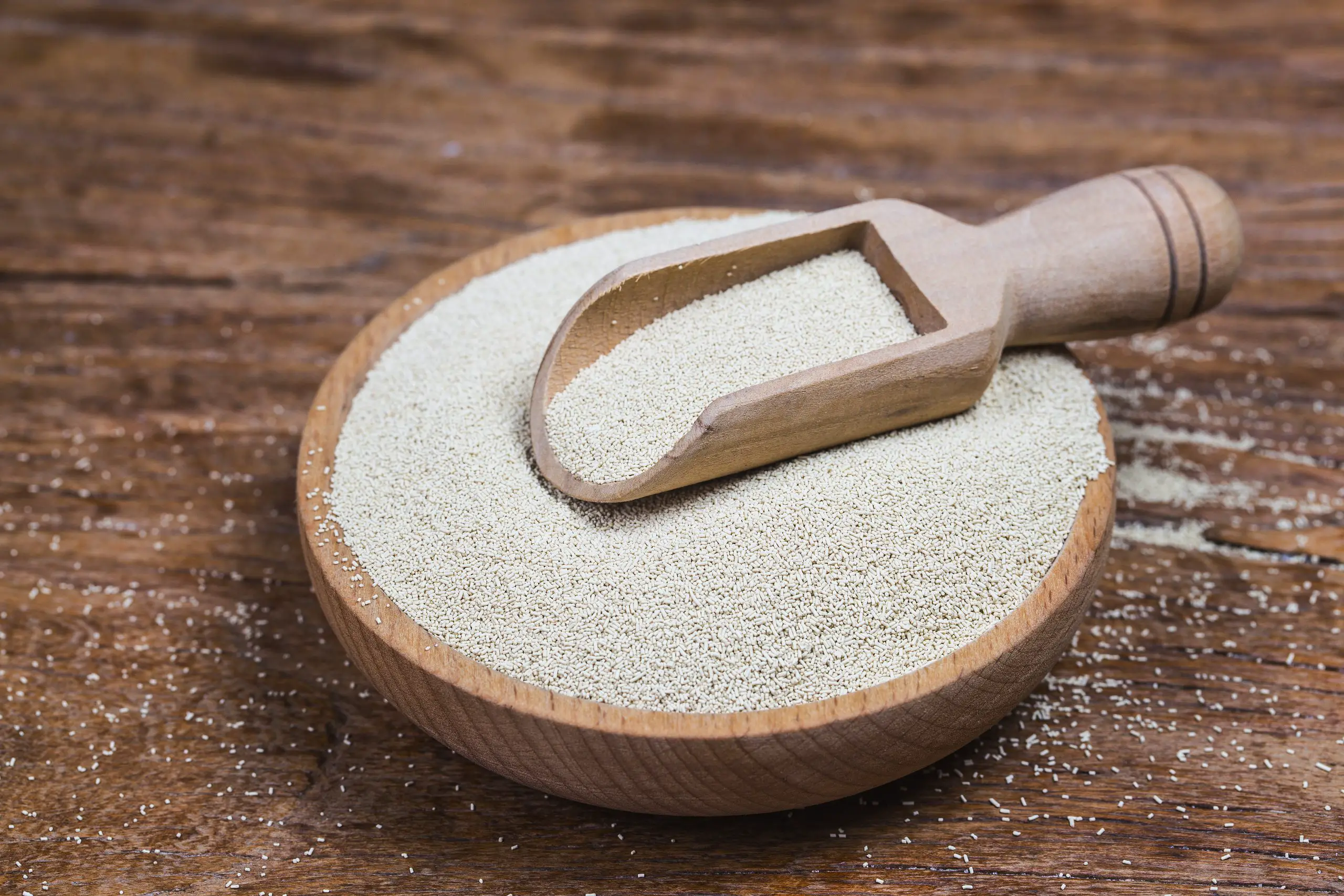Yeast is a live organism that is also a type of baking powder. To keep the yeast alive and ready for your next recipe, you must understand how to store yeast properly. Yeast is usually kept in the pantry but can also be kept in the refrigerator. However, it can also be frozen; freezing does not harm the active components and preserves them for up to 6 months. Learn more about the best yeast food storage conditions.

Nothing ruins dough faster than dead yeast; if you don’t store it properly, it will surely expire. Before baking bread, you need to understand how to keep yeast. You can store it in the refrigerator or freezer in an airtight container. Before storing yeast, make sure to identify the container. Here are some yeast storage tips:
What is Yeast?
Yeast is a dry component used in baking bread dough because kneading bread in yeast cells makes it rise. It’s also a crucial component of the alcoholic fermentation process, as yeast’s ability to feed and produce carbon dioxide directly correlates with how soon particular beers and liquors reach their final stages.
Active dry yeast is one of the most popular yeast varieties—this common baker’s yeast lasts a long time and meets all the basic needs the component is supposed to address. Dry active yeast isn’t the fastest riser, but it’s dependable, cheap, and easy to find. Fresh yeast (also known as cake yeast) and quick yeast are two other yeast varieties.
How to Store Yeast?
Although yeast keeps well in its original packaging, you need to know how to keep it fresh once the seal has been broken. Think about the following three methods for storing yeast:
Freezer
The yeast’s shelf life can be extended for the largest period by freezing it once you’ve opened a package. If you use active or instant yeast, this will stop spoilage for six months; if you use fresh yeast, it will stop spoilage for three months. Before using the yeast to leaven bread, give it time to thaw.
Pantry
It’s ideal for keeping your yeast in its original packaging if you plan to store it at room temperature in your pantry or another dry location. If the packaging is kept sealed, the yeast won’t go bad in this climate for two years. Additionally, look at the “best before” or expiration date. Once the package has been opened, could you put it in the freezer or refrigerator?
Refrigerator
If you believe you will use the yeast soon after opening it, put it in the refrigerator. You have two weeks if the yeast is a fresh yeast block. If the yeast is active dry or instant, you may store food for considerably longer; both types of yeast should last for at least four months.
Airtight Container
When making bread, yeast is a necessary ingredient. It would help if you correctly kept yeast because it needs to be alive for it to rise. Proofed yeast can last for up to two years when kept in an airtight container. Before you make your bread, yeast could go dormant and die if it’s stored incorrectly.
Packaging and jarred yeast can be stored for up to two years in a cool, dry location. A freezer or refrigerator with low humidity would be the best place for this product. Yeast can only be kept in the refrigerator for four to six months before it becomes unusable. It can, however, stay longer if it is kept in a cool, dry environment. Yeast needs to be cooled to avoid freezer burn or dampness.
Types of Yeast
There are two major varieties of yeast used for baking. However, there are four major yeast types: baker’s yeast, brewer’s yeast, and distiller’s yeast.
But we’ll concentrate on baker’s yeast because it’s the one you’re most familiar with. Baker’s yeast is classified into three categories. These are some examples:
- Active Dry Yeast
- Fresh Yeast
- Instant/ Rapid Rising Yeast
Let’s go over each of these in greater depth.
Active Dry Yeast
Active dry yeast is the type of yeast you are most likely familiar with and can readily acquire at your local grocery shop.
Unopened active dry yeast can be stored for up to two years after being packed. Active dry yeast nearing or has passed its expiration date should be proven because knowing before you bake preferable to watching your loaf of bread entirely flop. Refrigerate or freeze unsealed active dried yeast in an airtight container.
It is the most widely available form of baking yeast. This yeast is the original yeast, and it is also all-natural. It is the go-to option for most bakers since it truly provides the best outcomes when baking, provides the best baking experience, and provides a wonderful flavor at the finish.
When preparing your recipe, do not combine active dry yeast with any other dry ingredients, and it must also be dissolved in water before being added to your recipe.
Fresh Yeast
Fresh yeast is typically used by expert bakers and cooks well-versed in yeast. This yeast is known as ‘cake yeast’ or ‘compressed yeast.’
Fresh yeast is normally kept in the refrigerator for two weeks. If your yeast has turned dark brown, hard, or crusty, it’s past its prime; if mold has formed, discard it.
As you may be aware, fresh yeast is sold as blocks rather than powder. The block is around 70% moisture and is a light hue. This yeast block is soft and crumbles readily; nonetheless, it has a thicker texture than powdered yeast and a stronger odor. It is not considered a dry yeast and is largely utilized by experienced bakers, making it more difficult to obtain.
Instant Yeast
The terms immediate and rapid-rise are synonymous. It’s also known as ‘bread-machine yeast.’ This yeast is easy to deal with because it decreases the required rising time.
Instant yeast has a two-year shelf life and operates best when kept away from heat and moisture. After you’ve opened it, please place it in an airtight container and store it in the fridge or freezer. Some instant yeast choices may only require 5-30 minutes of rising time. Which, if you’re in a hurry, is a lifesaver.
This type of yeast is most commonly used in bread machines, hence the name “bread-machine yeast.” You may lose a tiny amount of flavor or texture when you use quick yeast, but most people don’t notice the difference. On the other hand, this yeast is a little stronger than the others.
Tips for Proper Yeast Storage
Here is a fast overview of all the information you need to know regarding safe yeast storage.
Best When Airtight
It would help if you always store your yeast in an airtight container, regardless of the variety you use. By doing this, you can prevent the yeast from being activated before you can use it by moisture from the air and other food products.
Refrigeration
Store your yeast in the refrigerator or freezer to increase its shelf life. When yeast is frozen, the cells are suspended, which prolongs their freshness.
Dates of Expiration are a Guideline
While yeast may keep longer than anticipated, incorrect storage might cause it to decay sooner. Therefore, before using yeast in a recipe, check the yeast’s expiration date and general health.
Proof Yeast, if Uncertain
You should prove your yeast before using it in a recipe if you are concerned that it may be ruined. Doing this will allow you to more accurately evaluate whether the yeast is active and possibly avoid destroying a delicious recipe.
Apply Labels
Remember to label the outside of the box with the indicated expiration date when keeping opened yeast. Doing this will make you more likely to use the yeast before it goes bad and steers clear of inactive yeast.
How Long does Yeast Last?
On average, yeast can be stored in its unopened packaging for two years. Once opened, the yeast should be kept in the refrigerator for 4 to 6 months, depending on where you store it. It will last longer in the freezer than in the refrigerator, but the exact timing will depend on the type of yeast you use. Vendors sell Yeast in airtight containers, and the objective is to duplicate those initial circumstances as nearly as possible. Whether you use plastic wrap, a freezer bag, a glass jar, or something else, the objective is to get as much air out of the new sealed container as possible while ensuring it’s well closed.
Yeast Expires, Right?
Since yeast is a living organism, it all perishes eventually. Although all yeast has an expiration date, it will not go well sooner if it is not stored properly. Yeast stored properly can remain useful for up to four months after its expiration date, and improperly storing yeast might not last until it expires.
Can Yeast be Freeze?
Yes, whether it is opened or not, yeast can be kept in the freezer. Dry yeast should be kept in the freezer for up to six months after being opened in an airtight container, and there is no need to freeze fresh yeast.
Dry yeast does not need to be thawed first; it may be used straight from the freezer. However, make sure to proof the yeast first before using it in your recipe.
How to Determine Whether Yeast is Active?
Taking yeast out of storage and proofing it should be easy. Try this simple, three-step procedure to test your yeast:
- Fill a cup with warm water. You can heat some water over a flame or use hot tap water. In either scenario, you should strive for a temperature of 110 to 115 degrees Fahrenheit. At 120 degrees, the yeast will start to suffer harm; at 140 degrees, the yeast will no longer be able to rise or become energized in the future.
- Combine sugar and yeast. Add one teaspoon of sugar to the water, and the yeast will react and start rising as you stir it in. Add two teaspoons of yeast and whisk them in after it has sat for about a minute. Leave the mixture and wait for the yeast to increase quickly. If it foams to the top, the object you took out of storage is still functional.
- Verify whether the yeast rises. Return after five to ten minutes has passed since you awoke. The yeast granules can aid in fermentation or help the dough rise if they are at the top of the half-cup mark, indicating that they are still active. Otherwise, throw away the old yeast if it hasn’t risen.
Conclusion
You can store dry yeast in the refrigerator or freezer, regardless of the type. Freezing yeast in bulk is a great way to keep it fresh if you want to buy it in bulk. Some producers claim that freezing dry yeast results in damaged yeast cells and decreased flavor, but this is not true. Rather than harming the yeast cells, freezing them causes them to be suspended, allowing the yeast to thrive until you’re ready to use it.
One of the most challenging aspects of storing yeast is keeping it alive. Yeast can become inactive over time. The good news is that you can usually activate the yeast, which is why you start with dried active yeast. Keeping yeast alive is generally accomplished with wet yeast, and fresh yeast, on the other hand, has a high moisture content. When it comes to dried yeast, once opened, the best approach to keep it alive and active is to put it in the fridge.
